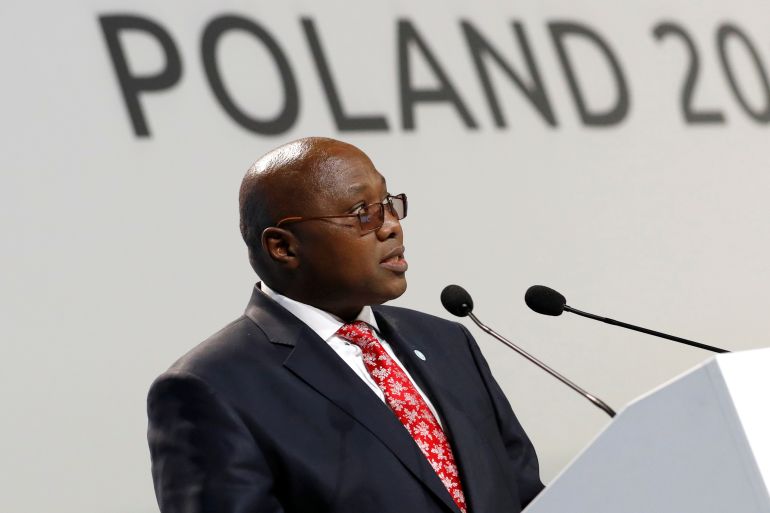Eswatini’s Ambrose Dlamini dies after contracting COVID-19
The 52-year-old prime minister died in a South African hospital four weeks after testing positive for COVID-19.

The prime minister of Eswatini, Africa’s last absolute monarchy, died in a South African hospital on Sunday, the government said in a statement.
Ambrose Dlamini, 52, tested positive for COVID-19 four weeks ago.
Keep reading
list of 4 itemsSouth Korea logs record 1,030 cases amid ‘COVID-19 emergency’
Germany to impose stricter COVID lockdown during holiday season
COVID-19 exposes need for radical policies to tackle inequality
“Their Majesties have commanded that I inform the nation of the sad and untimely passing away of His Excellency the Prime Minister Ambrose Mandvulo Dlamini,” Deputy Prime Minister Themba Masuku said in a statement.
The prime minister “passed on this afternoon while under medical care in a hospital in South Africa,” he added, without detailing the cause of Dlamini’s death.
Dlamini had announced in mid-November that he had tested positive for the coronavirus but said that he felt well and was asymptomatic.
He was moved to South Africa on December 1, to “guide and fast-track his recovery,” from COVID-19. At that time, the government said Dlamini was stable and responding well to treatment.
Dlamini was appointed prime minister in November 2018, following his position as the chief executive officer of telecoms company MTN Eswatini. He had worked in the banking industry for more than 18 years, including as the managing director of Eswatini Nedbank Limited.
Formerly known as Swaziland, the kingdom of Eswatini has reported over 6,700 coronavirus cases and 127 deaths among its population of 1.2 million people.
A South Africa-based civil society group, the Swaziland Solidarity Network (SSN), had accused the government of giving the prime minister special treatment by moving him to a country with better healthcare.
More than 39 percent of the tiny landlocked country’s population lived below the poverty line in 2016 and 2017, according to the World Bank.